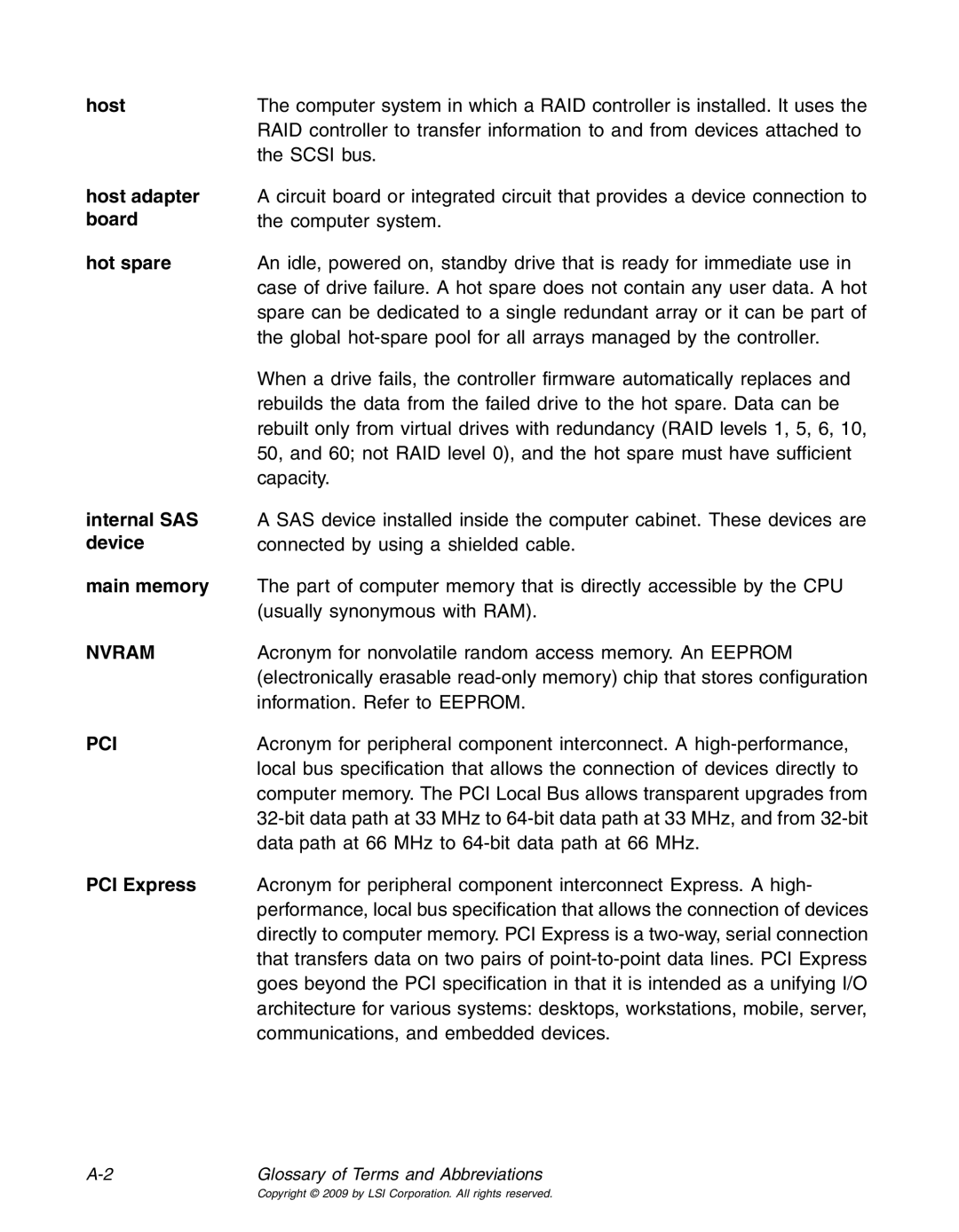host | The computer system in which a RAID controller is installed. It uses the |
| RAID controller to transfer information to and from devices attached to |
| the SCSI bus. |
host adapter | A circuit board or integrated circuit that provides a device connection to |
board | the computer system. |
hot spare | An idle, powered on, standby drive that is ready for immediate use in |
| case of drive failure. A hot spare does not contain any user data. A hot |
| spare can be dedicated to a single redundant array or it can be part of |
| the global |
| When a drive fails, the controller firmware automatically replaces and |
| rebuilds the data from the failed drive to the hot spare. Data can be |
| rebuilt only from virtual drives with redundancy (RAID levels 1, 5, 6, 10, |
| 50, and 60; not RAID level 0), and the hot spare must have sufficient |
| capacity. |
internal SAS | A SAS device installed inside the computer cabinet. These devices are |
device | connected by using a shielded cable. |
main memory | The part of computer memory that is directly accessible by the CPU |
| (usually synonymous with RAM). |
NVRAM | Acronym for nonvolatile random access memory. An EEPROM |
| (electronically erasable |
| information. Refer to EEPROM. |
PCI | Acronym for peripheral component interconnect. A |
| local bus specification that allows the connection of devices directly to |
| computer memory. The PCI Local Bus allows transparent upgrades from |
| |
| data path at 66 MHz to |
PCI Express | Acronym for peripheral component interconnect Express. A high- |
| performance, local bus specification that allows the connection of devices |
| directly to computer memory. PCI Express is a |
| that transfers data on two pairs of |
| goes beyond the PCI specification in that it is intended as a unifying I/O |
| architecture for various systems: desktops, workstations, mobile, server, |
| communications, and embedded devices. |
Glossary of Terms and Abbreviations | |
| Copyright © 2009 by LSI Corporation. All rights reserved. |
